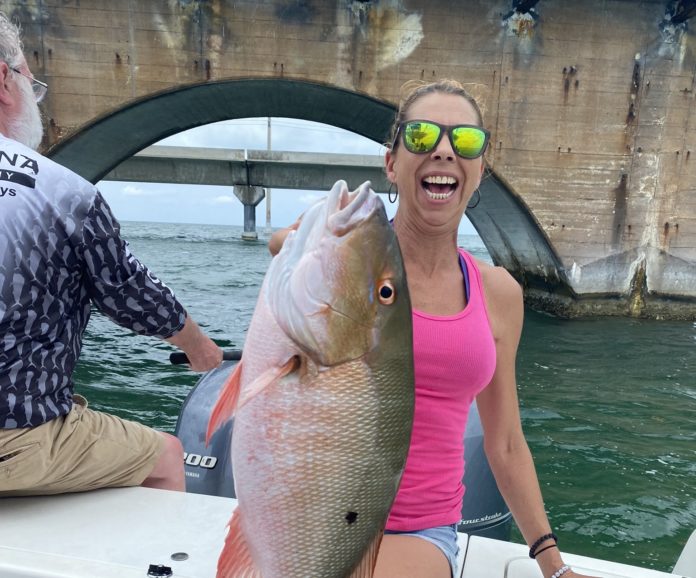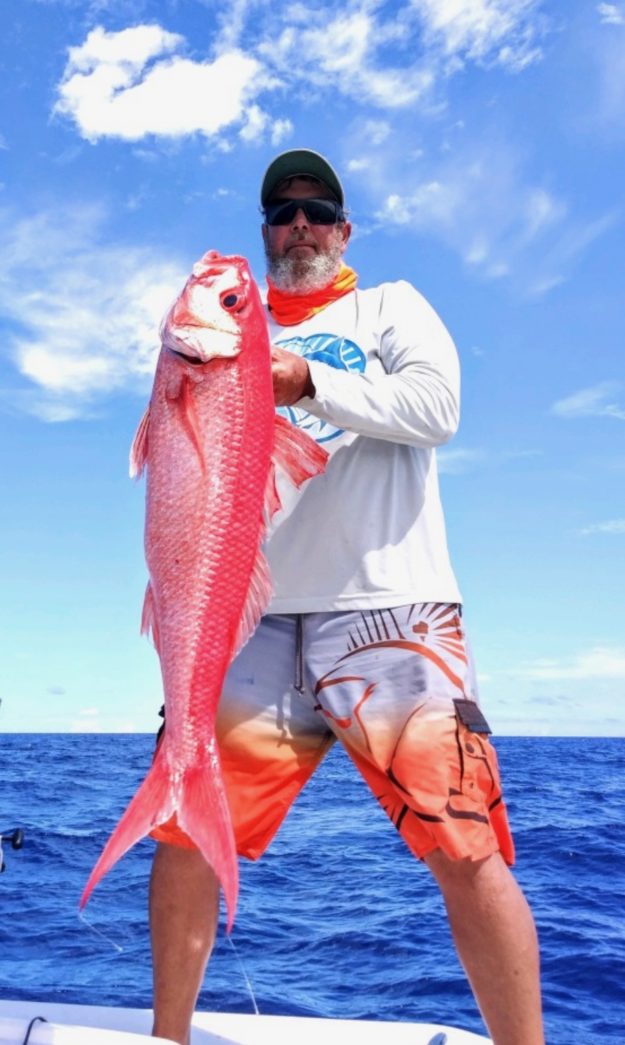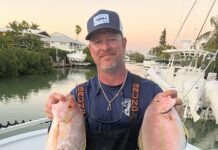
It would be very difficult to catch every species of snapper in the Florida Keys in one day. In fact, I don’t personally know of anyone who has accomplished that feat. The reason it would be so difficult is that different species of snapper prefer an array of different baits and are caught in different depths at different locations, with different seasons to legally harvest.
There are arguably nine prevalent species of snapper in the Florida Keys: cubera, mangrove, yellowtail, vermillion, lane, queen, red, mutton and schoolmaster, though some will claim that there are 10 or 11 total snapper species here.
One fish that many people mistake as a snapper species is a hogfish, sometimes referred to as a “hogfish snapper,” but marine biologists will tell you that hogfish aren’t part of the snapper family. Hogfish are members of the wrasse family with 600 other species of fish, typically all tropical fish, but snappers are members of the ray-finned fish family, also known as perciform fish.
Others may include yelloweye snapper as a Keys species, but catching one here is so rare that it isn’t considered a Florida Keys snapper. They are normally caught in the Bahamas and far off the coast of Miami. If you do happen to catch a yelloweye in the Florida Keys, it got lost somehow.
One thing is for sure: even though our nine species of snapper have a lot of differences, they all have one thing in common. They are the most popular table fare in the world. No matter what seafood market you go to, snapper is sold on the top shelf. Yellowtail snapper, for example, typically sells for around $30 per pound at most fish markets.
The top two snappers targeted in the Florida Keys are mangrove and yellowtail snapper. Both are open season year-round. Mangrove meat tends to be a little more firm than yellowtail meat, and yellowtail meat tends to be a little sweeter than mangrove meat. Mangrove is normally fileted, while most prefer yellowtail cooked as a whole fish with the head on.
Both fish fight well. The mangrove snapper is more of a digger with its fan tail, while a yellowtail is more of a thrasher with its large forked tail.
Number three on the snapper scale would have to be the mutton snapper, also open season year-round. Muttons have a very distinct black dot near their tails – “When you see a button, it’s a mutton.” This black dot resembles an eyeball and serves as a defense mechanism. Predators such as sharks, barracudas, goliath grouper and others go for the black dot, thinking it’s the mutton’s head, allowing the target fish to escape an attack.
Mutton meat is every bit as good as any other snapper; they are just harder to target and picky eaters. They typically only eat over a sandy bottom and are spooked by lead sinkers, heavy leaders and big hooks, making them hard to fool and catch.
Cubera snapper are by far the largest snapper species in the Florida Keys. Along with other fish, their diets include lobster. Old timers in the islands caught the heck out of cubera back in the day, mainly because lobster laws and regulations were lax or even nonexistent. Fishermen would hook up a lobster and send them down to their cubera holes.

Today, fishing for cubera with lobster can get a little complicated. Most marine law enforcement officers I’ve spoken to don’t have any objection to using live, legal-sized lobster for cubera snapper bait. Here are a few issues with using live lobster for bait: they must be legal size, they must be used during lobster season, and the lobster must be harvested using legal techniques. You can’t spear the lobster, shoot them, gig them, broom them or hook them. When you use them for bait, you are hooking them, which makes this issue a gray area.
Queen snapper are targeted 1,000 to 1,500 feet deep using electric reels, huge lead weights and multiple hooks. The most important things about deep dropping for queen snapper are to use fresh bait and keep your line straight up and down. Queen snapper is my personal favorite snapper to eat.
I’ve never caught a red snapper in the Florida Keys. I’ve caught them 50-plus miles off the coast of Marathon in the Gulf of Mexico. I do know of several anglers, however, who have not only caught red snapper in the Florida Keys, but also know when and where to catch them fairly regularly. The season for red snapper is very short, the bag limit is small and each year the season changes.
I’d put lane, schoolmaster and vermilion snapper in a class of their own. They are also open season year-round. This class of snapper I’ll call “bycatch” snapper, as they’re often accidental catches when you’re fishing in a school of another species.
We catch most snapper year-round. They’re great fighting fish, awesome table fare and very plentiful in the Florida Keys. We’d love to take y’all out snapper fishing followed by a hook-and-cook meal at Castaway Restaurant.
To book a charter with Ana Banana, call or text Capt. Joel at 813-267-4401 or Capt. Jojo at 305-879-0564, or visit anabananafishing.com.
























